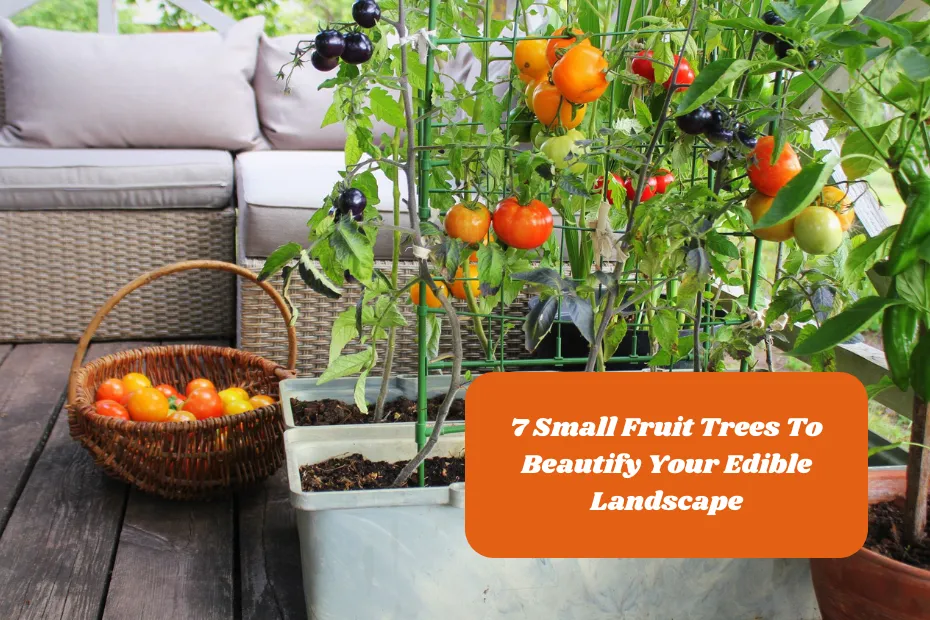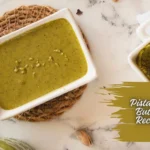Using our guidance to the “7 Small Fruit Trees To Beautify Your Edible Landscape,” turn your garden into a vivid and useful retreat. Apart from offering great, fresh food, little fruit trees accentuate your outside area visually.
These little fruit trees are ideal for improving the appearance and use of your landscape regardless of the size of your garden, backyard, or even balcony.
This blog will go over seven wonderful choices that fit in small areas and provide a rich crop. These little, tasty additions to your garden will help you to embrace the beauty and abundance of nature.
1. Dwarf Apple Trees
Because of their reasonable scale and plenty of fruit they produce, dwarf apple trees are a great complement to an edible landscape.
Usually growing between six to ten feet tall, these little copies of classic apple trees are perfect for small gardens or even container planting. Dwarf apple trees have beauty in their adaptability and simplicity of care.
Their lower scale makes harvesting simpler and they call for less trimming than typical apple trees. These trees may yield an abundance of apples, which are not only great but also flexible in the cooking, with correct care.
Apple tree spring blooms also have decorative value, therefore transforming any landscape into a visual feast. From several dwarf apple types, each with distinctive tastes and qualities, you may ensure the ideal tree to fit your taste and garden size.
2. Dwarf Cherry Trees
Another great choice for bringing beauty and use into your culinary scene are dwarf cherry trees. Usually reaching heights of 8 to 12 feet, these trees are a great fit for even patios or modest gardens.
Beautiful spring flowers from dwarf cherry trees are well-known for giving any garden some visual appeal. Not only are the cherries they produce delicious to eat fresh, but they also fit for producing pies, jams, and other preserves.
Relative low maintenance requirements of miniature cherry trees are one of their key benefits. Many times self-pollinating, they allow one tree to produce a good yield.
Furthermore, these trees are cultivated to be resistant to diseases, therefore lowering the necessity for chemical treatments. There is a miniature cherry tree to fit each taste and garden situation among the sweet to sour cherry kinds.
3. Dwarf Peach Trees
Gardeners who wish to savor the flavor of fresh peaches without a big orchard will find dwarf peach trees ideal. Usually growing between six and ten feet tall, these trees are renowned for their exquisite pink flowers found in early spring.
Apart from their visual appeal, the flowers draw pollinators, which helps your garden’s general condition. As delicious as those from normal trees, dwarf peach plants yield full-sized peaches.
They grow best on well-drained soil and depend on full light. Maintaining their form and guaranteeing optimum air circulation—which helps to avoid disease—that depends on regular trimming. A dwarf peach tree may be a copious supply of luscious peaches ideal for fresh, baking, or preserving with correct care.
4. Dwarf Pear Trees
An edible landscape would benefit much from dwarf pear trees, which combine visual attractiveness with the yield of mouthful-quality fruit. Usually reaching heights of 8 to 12 feet, these trees fit smaller gardens.
Dwarf pear trees explode in April with clusters of white blossoms that not only look great but also draw helpful pollers. Usually just as big and delicious as those grown on standard-sized trees, the pears these trees yield are If the soil is well-drained, dwarf pear trees—known for their resilience—can flourish in a range of soil kinds.
To keep their form and vitality, they benefit from yearly trimming and need consistent watering—especially in dry conditions. Dwarf kinds of Bartlett, Bosc, and Anjou enable you savor a diversity of textures and tastes in your home-grown pears.
5. Dwarf Fig Trees
A great addition to an appetizing scene, dwarf fig trees provide beautiful ornamentation as well as plenty of fruit. Usually developing to be six to ten feet tall, these trees are appropriate for small gardens or container cultivation.
Large, lobed leaves from fig trees give any garden environment a tropical appearance. Apart from their looks, dwarf fig trees yield plenty of figs, which are valued for their sweet, honey-like taste and unusual texture.
Fresh, dried, or utilized in a number of culinary creations, figs are versatile. Relatively easy to cultivate, dwarf fig trees fit warm areas. To provide the greatest fruit, they like fully sun and well-drained soil.
Frequent trimming stimulates good development and helps to preserve their size. Dwarf fig trees are a great fit for any edible landscape because of their mix of beauty and output.
6. Dwarf Lemon Trees
For those wishing to include a bit of the Mediterranean into their culinary scene, dwarf lemon trees are the perfect addition. Usually growing to be 6 to 10 feet tall, these trees are ideal for pots or small gardens.
Fragrant white blossoms of dwarf lemon trees are well-known for blooming year-round and filling your yard with a wonderful aroma. From cooking to baking to creating cool beverages, the full-sized lemons these trees provide may be employed in a range of gastronomic contexts.
Dwarf lemon trees’ quite minimal care requirements are one of its key advantages. They grow best on well-drained soil and depend on full light.
A healthy tree and plenty of yield depend on consistent watering and sporadic feeding with a citrus-specific fertilizer. Year-round enjoyment of the zest and juice of home-grown lemons is made possible by miniature variants of Meyer and Eureka.
7. Dwarf Plum Trees
An edible landscape would be much enhanced by dwarf plum trees, which provide both pleasing appearance and mouthwatering fruit. Usually growing to around 8 to 12 feet tall, these trees are appropriate for compact gardens.
Known for their spring flowers, which range in hue from white to pink and provide a wonderful burst of color to any landscape, dwarf plum trees These trees provide full-sized plums that are fresh, dried, or utilized in a range of dishes.
Usually easy to maintain, dwarf plum trees flourish in well-drained soil under full light. Regular trimming enables them to keep their form and provide excellent air circulation, which helps to avoid illness.
From your home-grown plums, you may savor a diversity of tastes and purposes with varieties like Santa Rosa and Stanley available in dwarf sizes. Dwarf plum trees are a great addition to any edible landscape because of their mix of beauty and output.
Conclusion
One great approach to mix beauty and utility is including little fruit trees into your scene. While producing fresh, homegrown fruit, the seven trees underlined in this article offer a variety of colors, tastes, and textures, thereby enhancing your outdoor area.
These easily grown and maintained trees are perfect for any garden size, regardless of experience level for the gardener. Plant these delicious fruit trees now to begin your path towards a more lovely and appetizing scene.
Q: What are the benefits of planting small fruit trees in my garden?
A: Small fruit trees enhance your garden’s beauty and productivity, offering fresh produce, vibrant colors, and easy maintenance.
Q: Can small fruit trees thrive in containers or small spaces?
A: Yes, many small fruit trees are well-suited for containers and small spaces, making them perfect for patios, balconies, and compact gardens.






